Diabetes Medication Decision Guide
Your Personalized Diabetes Treatment Guide
Based on the latest medical guidelines, answer these questions to find medications that best match your needs.
Your Personalized Recommendations
Key Benefit:
| Medication | Low Blood Sugar Risk | Weight Impact | Cost | Heart/Kidney Protection | Key Benefit |
|---|---|---|---|---|---|
If you’re taking Glucotrol XL for type 2 diabetes, you’ve probably wondered if there’s a better option. Maybe your blood sugar isn’t quite where it should be. Maybe you’re dealing with side effects like low blood sugar or stomach upset. Or maybe your insurance just raised the price. You’re not alone. Thousands of people on glipizide - the active ingredient in Glucotrol XL - ask the same question: Are there alternatives that work better, cost less, or cause fewer problems?
What Glucotrol XL Actually Does
Glucotrol XL is an extended-release version of glipizide, a sulfonylurea drug. It works by telling your pancreas to make more insulin, especially after meals. That helps lower blood sugar. It’s taken once a day, usually before breakfast, and the extended-release form gives steady control over 24 hours.
But here’s the catch: because it forces your body to produce more insulin, it can cause hypoglycemia - low blood sugar - especially if you skip meals, exercise more than usual, or drink alcohol. Studies show about 1 in 5 people on sulfonylureas like glipizide experience at least one low blood sugar episode in a year. That’s not rare. It’s common enough that doctors now look at other options first.
Metformin: The First-Line Choice
If you’re not already on metformin, you should ask why. It’s the most prescribed diabetes medication in the world - and for good reason. Metformin doesn’t make your body produce more insulin. Instead, it helps your muscles and liver use insulin better and reduces sugar production in the liver.
Here’s how it stacks up against Glucotrol XL:
- Weight: Metformin often leads to slight weight loss. Glucotrol XL can cause weight gain.
- Low blood sugar risk: Metformin rarely causes hypoglycemia unless taken with other drugs. Glucotrol XL does, often.
- Cost: Metformin generics cost under $5 a month. Glucotrol XL can run $50-$100 without insurance.
- Side effects: Metformin can cause mild stomach upset at first - nausea, diarrhea - but that usually fades. Glucotrol XL’s main issue is low blood sugar, which can be dangerous.
A 2023 review of over 120,000 patients found that those starting on metformin had 23% fewer heart problems and 17% lower death rates over five years compared to those on sulfonylureas like glipizide. That’s not just about blood sugar numbers - it’s about living longer.
Glimepiride (Amaryl): The Closest Alternative
Glimepiride is another sulfonylurea, so it works almost exactly like glipizide. It’s also taken once daily and boosts insulin production. If your doctor switches you from Glucotrol XL to Amaryl, it’s likely because of cost or availability - not because it’s better.
But there are small differences:
- Glimepiride may have a slightly lower risk of low blood sugar than glipizide, especially in older adults.
- It lasts longer - up to 24 hours - so timing matters less.
- Cost is similar. Both are generic, but glimepiride is often cheaper by $10-$20 a month.
Still, it’s the same family of drugs. If Glucotrol XL causes low blood sugar, Amaryl probably will too. It’s not a real upgrade - just a different brand name with slightly different numbers.
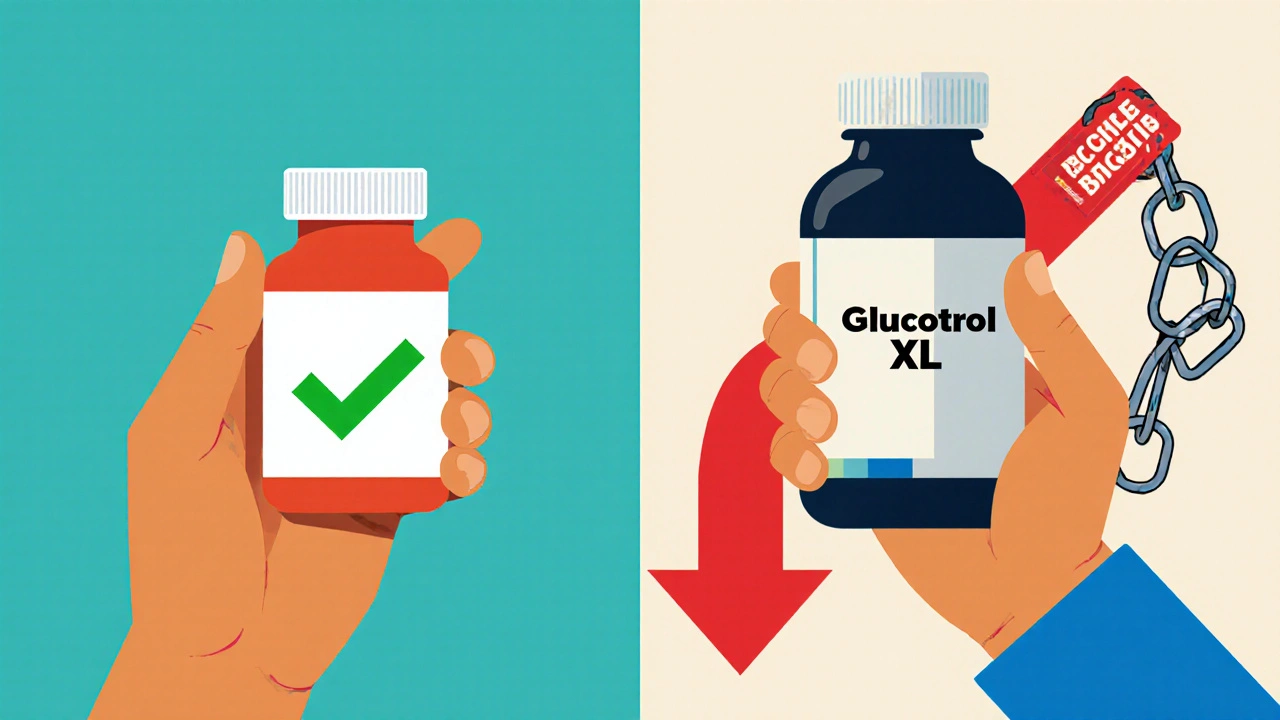
Januvia (Sitagliptin) and Other DPP-4 Inhibitors
Januvia belongs to a newer class called DPP-4 inhibitors. Instead of forcing insulin out of your pancreas, it helps your body use its own insulin more effectively - especially after meals. It’s gentle. It doesn’t cause weight gain. And it rarely causes low blood sugar - unless you take it with a sulfonylurea or insulin.
Here’s how it compares:
- Low blood sugar risk: Very low on its own. Glucotrol XL? High.
- Weight: Neutral. No gain, no loss.
- Cost: $300-$500 a month without insurance. That’s a big jump from glipizide’s $15.
- Effectiveness: Lowers A1C by about 0.5-1%. Glucotrol XL does 1-1.5%. So it’s a bit weaker.
Januvia is a good option if you’re worried about low blood sugar, you’re older, or you’re already on a sulfonylurea and need a safer combo. But if cost matters, it’s not a practical first choice.
SGLT2 Inhibitors: Farxiga, Jardiance, Invokana
These are newer, powerful drugs that make your kidneys flush out extra sugar through urine. Farxiga, Jardiance, and Invokana aren’t just blood sugar pills - they’re heart and kidney protectors.
For people with type 2 diabetes who also have heart disease, heart failure, or chronic kidney disease, these are often the top recommendation now - even before metformin in some cases.
Compared to Glucotrol XL:
- Weight loss: 4-8 pounds on average over six months.
- Heart protection: Jardiance cut heart-related deaths by 38% in high-risk patients.
- Kidney protection: Slows decline in kidney function - crucial for diabetics.
- Low blood sugar: Very low risk when used alone.
- Cost: $400-$600 a month without insurance. But many have patient assistance programs.
If you’re over 50, have high blood pressure, or have any signs of heart or kidney trouble, SGLT2 inhibitors are worth discussing. They’re not just alternatives - they’re upgrades.
GLP-1 Receptor Agonists: Ozempic, Trulicity, Victoza
These are injectable drugs that mimic a natural hormone in your gut. They slow digestion, reduce appetite, and help your pancreas release insulin only when blood sugar is high. That means less risk of low blood sugar.
They’re famous for weight loss - people often lose 10-20 pounds. But they’re also proven to reduce heart attacks and strokes.
Here’s how they stack up:
- Blood sugar control: Better than Glucotrol XL. A1C drops by 1-2%.
- Weight: Significant loss - often 10-15% of body weight.
- Heart and kidney benefits: Proven in large studies.
- Side effects: Nausea, vomiting, diarrhea - especially at first. Some people can’t tolerate them.
- Cost: $800-$1,200 a month without insurance. Medicare and some insurers now cover them for weight loss and heart protection, not just diabetes.
If you’re overweight, have heart disease, or want to reduce your diabetes meds long-term, GLP-1 agonists are game-changers. But they’re injections. If you hate needles, this isn’t for you.
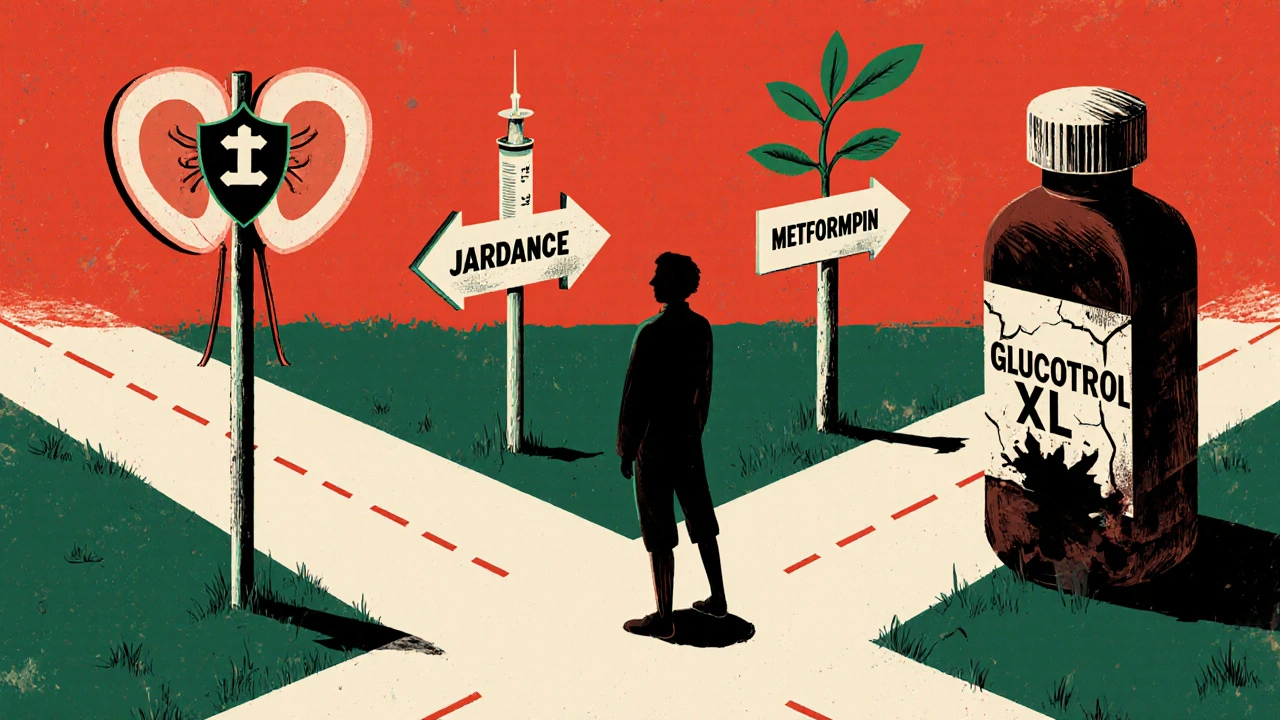
When to Stick With Glucotrol XL
That doesn’t mean Glucotrol XL has no place. It still works. It’s cheap. It’s been around for decades. And for some people, it’s the right fit.
You might stay on it if:
- You’re young, healthy, and at low risk for low blood sugar.
- You’re on a tight budget and can’t afford newer drugs.
- Your doctor has carefully adjusted your dose and you rarely have lows.
- You’re already doing well - stable A1C, no side effects, no other health problems.
But if you’ve had even one episode of low blood sugar - dizziness, sweating, confusion - it’s time to ask if you need a safer option.
What Your Doctor Might Not Tell You
Doctors don’t always switch you off Glucotrol XL because they’re stuck in old habits. Or because they assume you can’t afford better. Or because they think you won’t stick with injections or new routines.
But here’s the truth: newer drugs aren’t just fancy. They’re safer. They protect your heart and kidneys. They help you lose weight. And many are now covered by insurance - even with high deductibles - if you have complications.
Ask your doctor: "If I were 10 years younger and had no insurance, what would you recommend?" That question often reveals the real best option.
Bottom Line: What Should You Do?
Glucotrol XL isn’t bad - but it’s not the best anymore. Here’s what to consider:
- If you’re new to diabetes meds: Start with metformin. It’s safe, cheap, and proven.
- If you’re on Glucotrol XL and have low blood sugar: Switch to metformin or a DPP-4 inhibitor like Januvia.
- If you have heart or kidney disease: Ask about SGLT2 inhibitors like Jardiance or Farxiga.
- If you need weight loss and can handle injections: GLP-1 agonists like Ozempic are the most powerful option.
- If cost is your only barrier: Ask about patient assistance programs. Many drug makers give free meds to people who qualify.
Your diabetes treatment isn’t set in stone. It’s a tool. And if your tool is causing more problems than it solves, it’s time to try a different one.
Is Glucotrol XL still a good choice for type 2 diabetes?
Glucotrol XL works to lower blood sugar, but it’s no longer the first choice for most people. It carries a high risk of low blood sugar and can cause weight gain. Newer drugs like metformin, SGLT2 inhibitors, and GLP-1 agonists are safer and offer extra protection for your heart and kidneys. Glucotrol XL may still be appropriate if you’re young, healthy, on a tight budget, and have no history of low blood sugar episodes.
Can I switch from Glucotrol XL to metformin safely?
Yes, switching from Glucotrol XL to metformin is common and generally safe. Your doctor will likely stop Glucotrol XL first and start metformin at a low dose to avoid stomach upset. Because metformin doesn’t cause low blood sugar on its own, your risk of hypoglycemia drops significantly. Blood sugar levels may rise slightly at first, but they usually stabilize within a few weeks.
Why do some doctors still prescribe Glucotrol XL?
Some doctors prescribe Glucotrol XL because it’s cheap, familiar, and effective for lowering A1C. In areas with limited access to newer drugs or for patients without insurance, it’s a practical option. But guidelines from the American Diabetes Association now recommend metformin and newer agents over sulfonylureas like glipizide for most patients due to better safety and long-term outcomes.
Do any alternatives to Glucotrol XL cause weight loss?
Yes. SGLT2 inhibitors like Farxiga and Jardiance cause modest weight loss (4-8 pounds), while GLP-1 agonists like Ozempic and Trulicity can lead to 10-20 pounds or more. Metformin may cause a small loss (2-5 pounds). Glucotrol XL, on the other hand, often leads to weight gain because it increases insulin, which promotes fat storage.
How do I know if I’m experiencing low blood sugar from Glucotrol XL?
Symptoms include sweating, shaking, dizziness, confusion, rapid heartbeat, hunger, or blurred vision. These usually happen between meals or after exercise. If you’ve had any of these episodes, even once, it’s a sign Glucotrol XL might be too risky for you. Keep glucose tablets handy and talk to your doctor about switching.
Are there natural alternatives to Glucotrol XL?
No natural supplement can replace Glucotrol XL or other diabetes medications. Things like cinnamon, berberine, or chromium may slightly improve blood sugar, but they’re not strong enough to control diabetes on their own. Relying on them instead of proven medications can lead to dangerous high blood sugar and long-term damage. Always talk to your doctor before stopping any prescribed drug.

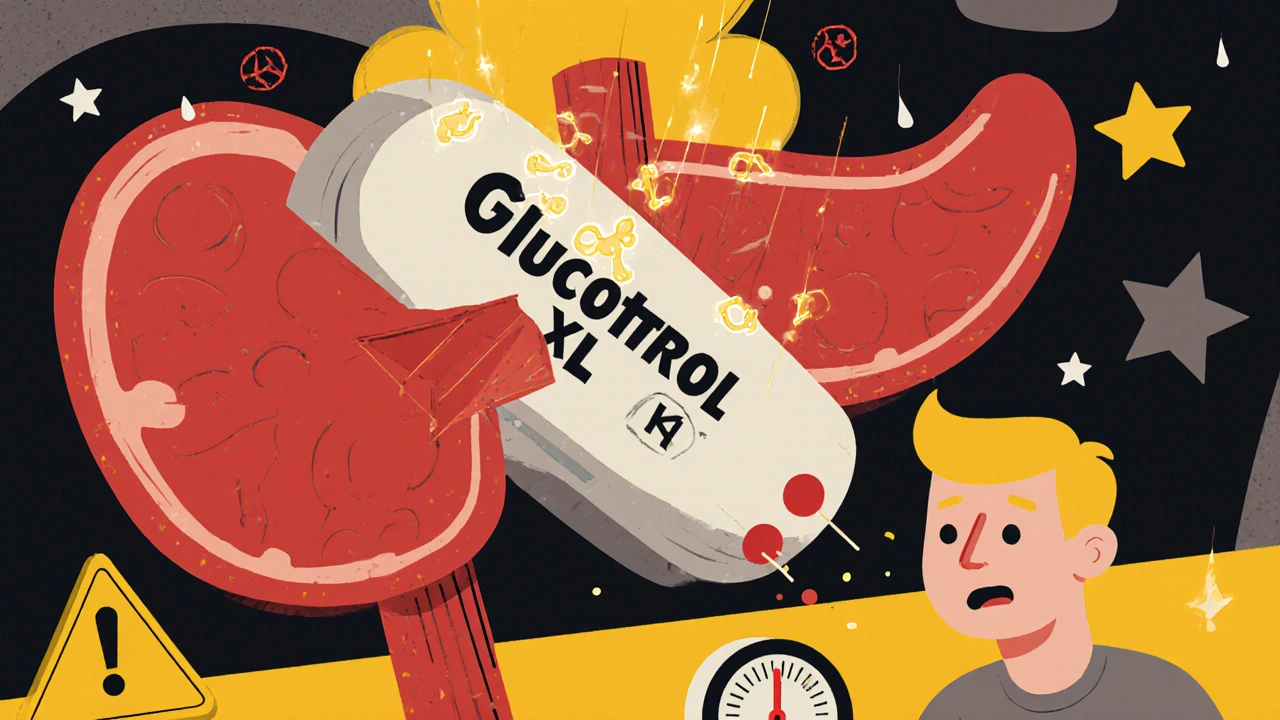
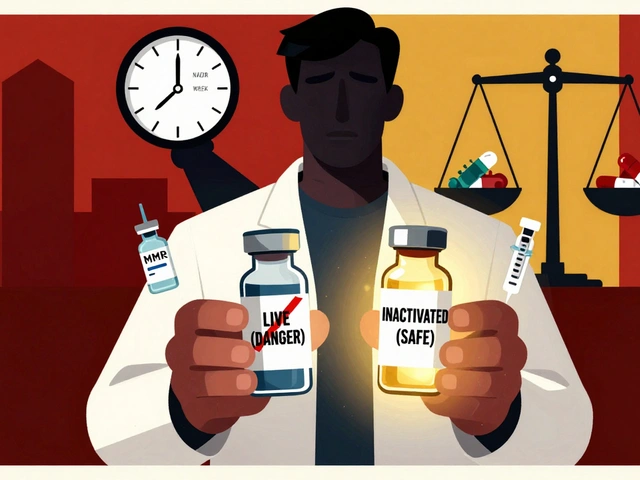

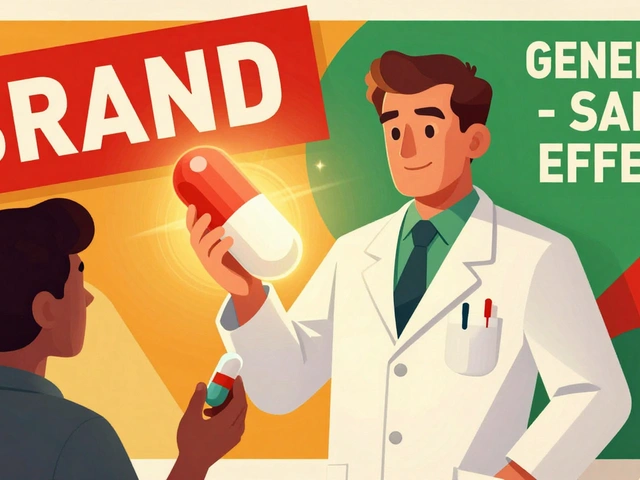
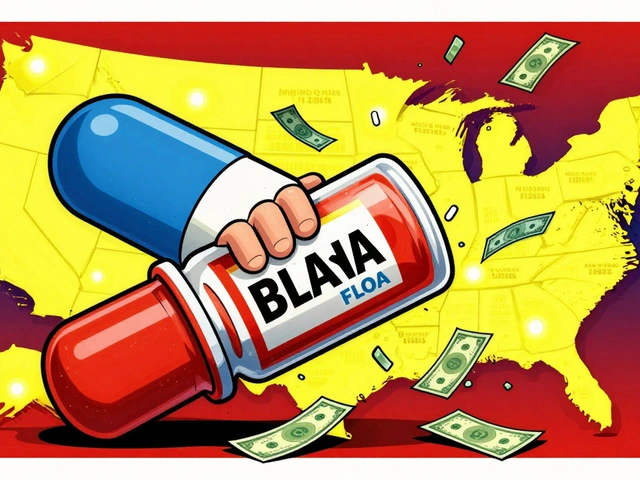
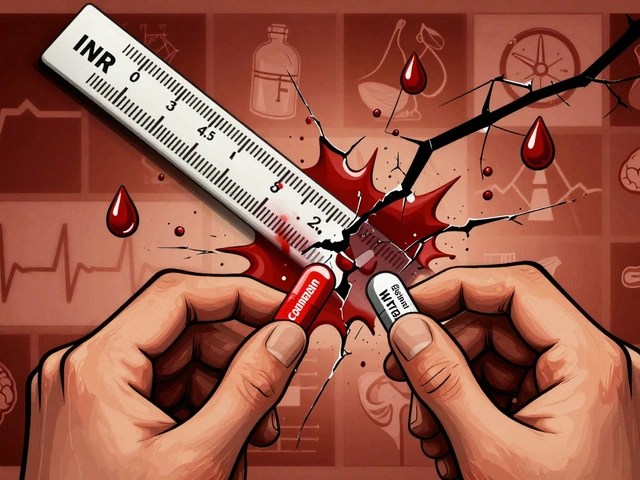
Stephen Maweu
November 1, 2025 AT 03:56Man, I was on Glucotrol XL for like 2 years and kept blacking out after lunch. My doc just shrugged and said 'take a snack.' Like, no thanks. Switched to metformin and never looked back. No more dizzy spells, lost 8 lbs, and my bill dropped from $90 to $7. Why do people still prescribe this like it's 2005?
anil kharat
November 2, 2025 AT 16:16Bro, this whole thread is just capitalism in disguise. Glucotrol XL is cheap, real, human. The new drugs? Pharma’s glittery trap. They want you addicted to $1200 injections so you forget you can eat less rice and walk more. We were fine before they sold us a dream wrapped in a pen. The real cure? Stop being a patient. Start being a person.
Keith Terrazas
November 4, 2025 AT 12:36It is, indeed, a matter of considerable scientific and socioeconomic import that the prescription paradigm for type 2 diabetes has undergone a paradigmatic shift over the past decade. The sulfonylurea class, while efficacious in lowering glycated hemoglobin, exhibits a markedly inferior risk-benefit profile when juxtaposed against SGLT2 inhibitors and GLP-1 receptor agonists, particularly in populations with concomitant cardiovascular or renal comorbidities. One must, therefore, question the persistence of glipizide as a first-line agent in light of robust meta-analytic evidence.
Matt Gonzales
November 5, 2025 AT 03:39OMG YES!! 😭 I switched from Glucotrol XL to Jardiance last year and my A1C dropped from 8.2 to 6.1!! 🎉 And I lost 15 lbs without even trying!! My heart doc said I’m basically a new person!! 💪 Don’t let cost scare you-ask about the patient program, they literally send you free meds for a year!! 🤝🙏 #DiabetesWin
Richard Poineau
November 6, 2025 AT 19:40You people are all idiots. Glucotrol XL is perfectly fine. You're just weak. If you can't handle a little low blood sugar, you shouldn't be eating carbs in the first place. I've been on it for 15 years and I'm fine. It's not the drug, it's you. Stop whining and eat less bread. Also, metformin gives you diarrhea and makes you smell like a wet dog. I've tried it. Don't be a baby.
Angie Romera
November 8, 2025 AT 14:53Y’all act like Glucotrol XL is the devil but my grandma’s on it and she’s 82 and still dancing at weddings. You think these new fancy pills are gonna make you immortal? Nah. You just wanna be skinny and blame Big Pharma. I’m not switching. I’m 70 and I’ve survived worse than a little sweat and shaky hands. Let old folks have their $15 pill.
Patricia Roberts
November 9, 2025 AT 23:24So… the doctor who prescribed me Glucotrol XL is now on Ozempic for his own weight loss. Funny how that works. 😏
Adrian Clark
November 10, 2025 AT 12:06Metformin gave me diarrhea so bad I had to quit. So I went back to Glucotrol XL. Now I’m stuck with the lows. So I started drinking coffee before breakfast. Works better than any pill. I’m basically a diabetes ninja now. ☕💀
Rob Giuffria
November 11, 2025 AT 00:52You’re all missing the point. This isn’t about drugs. It’s about control. Glucotrol XL forces your body to obey. The new drugs? They’re like whispering to your pancreas like it’s a pet. Weak. I don’t want my body to be pampered. I want it to be disciplined. That’s what this drug gives me. Not a cure. A command. And I respect that.
Barnabas Lautenschlage
November 11, 2025 AT 12:23It is important to acknowledge that while the clinical guidelines have evolved significantly, the decision to transition from sulfonylureas to newer agents must be individualized, taking into account patient-specific factors such as age, renal function, cognitive status, socioeconomic constraints, and personal preference. For instance, in elderly patients with limited mobility and fixed incomes, the cost-effectiveness and simplicity of once-daily glipizide may outweigh the marginal benefits of newer agents with complex dosing regimens or injection requirements. Furthermore, the risk of hypoglycemia, while statistically higher with sulfonylureas, may be mitigated through patient education, meal timing, and glucose monitoring. Therefore, while newer agents represent significant therapeutic advances, their universal adoption cannot be assumed without considering the practical realities of daily life for many patients.